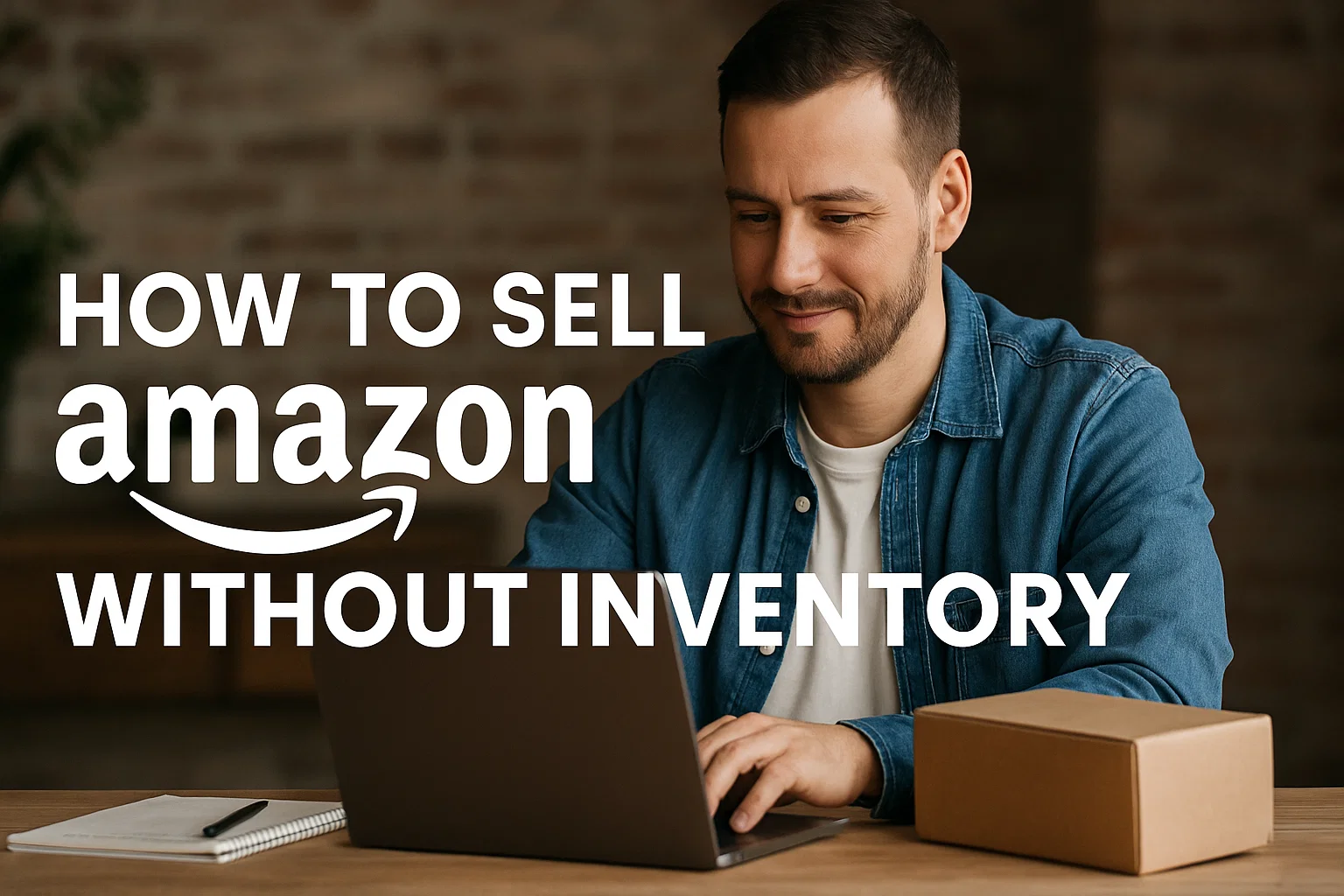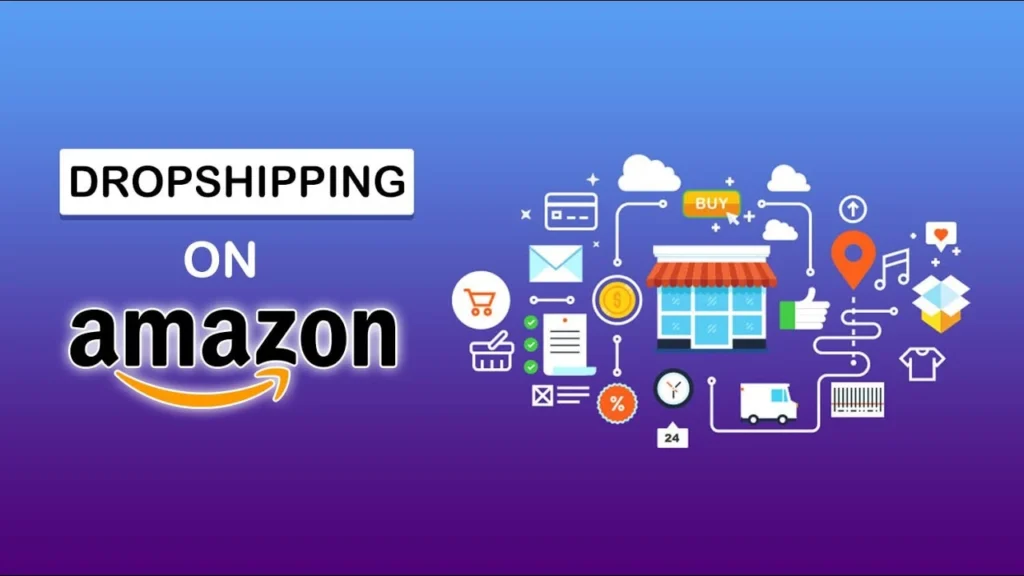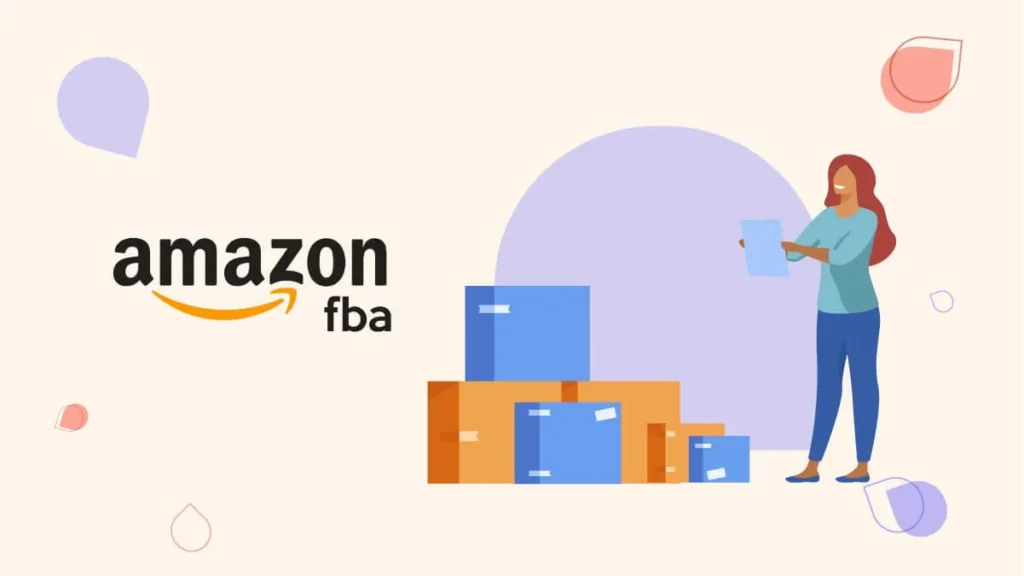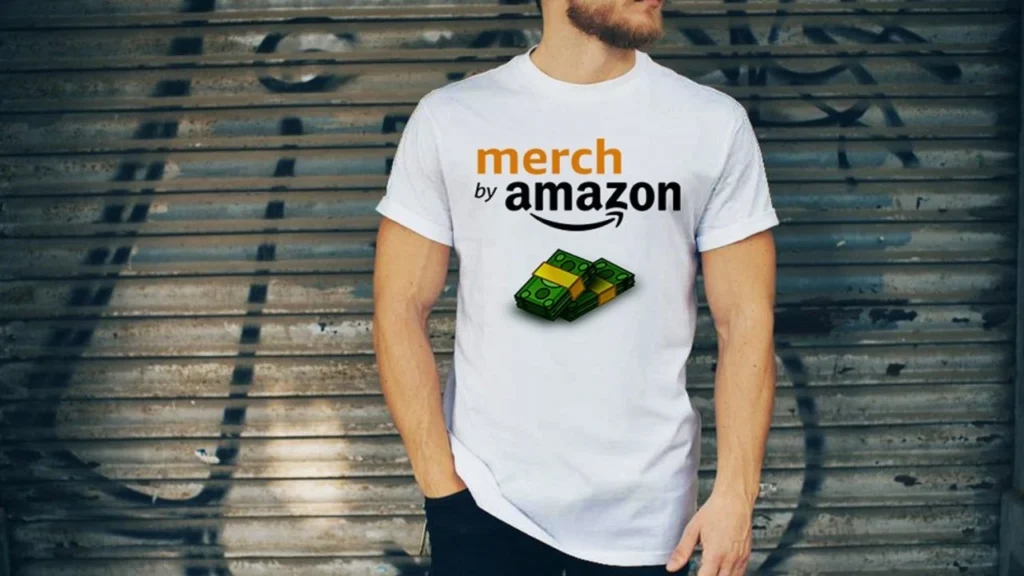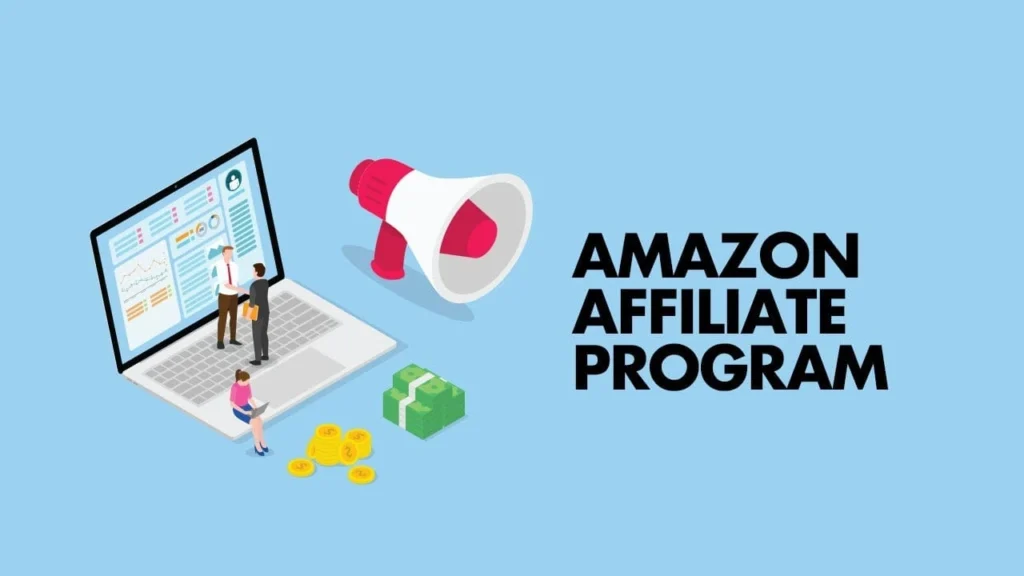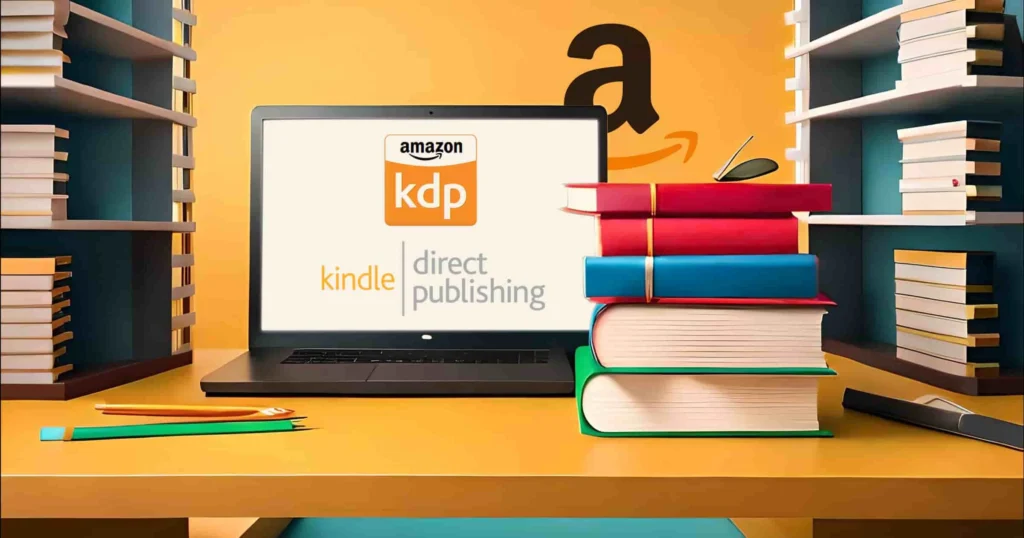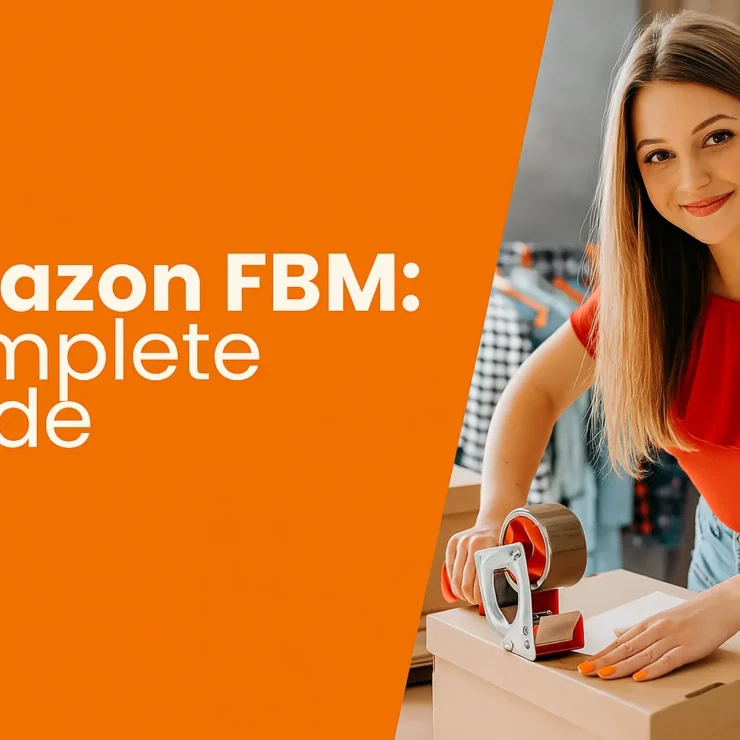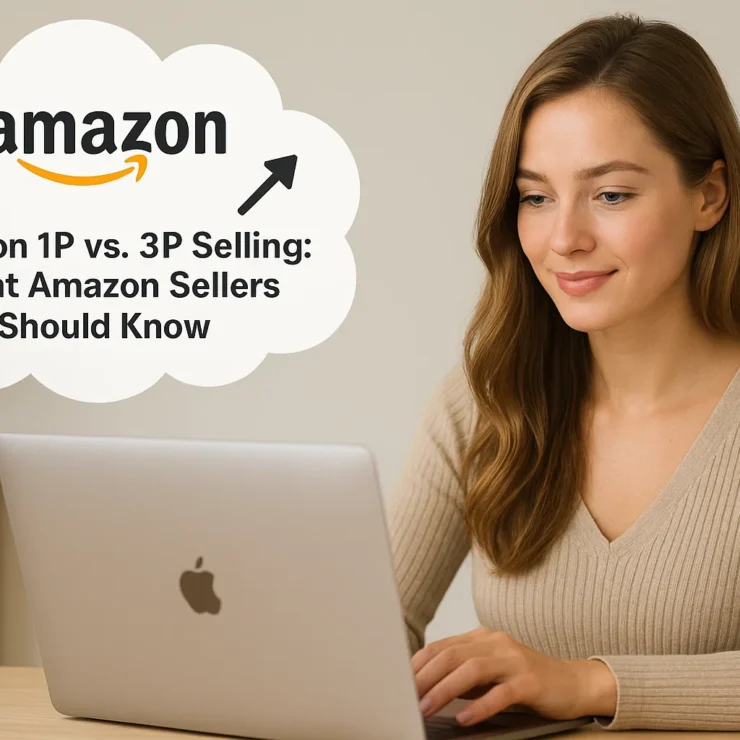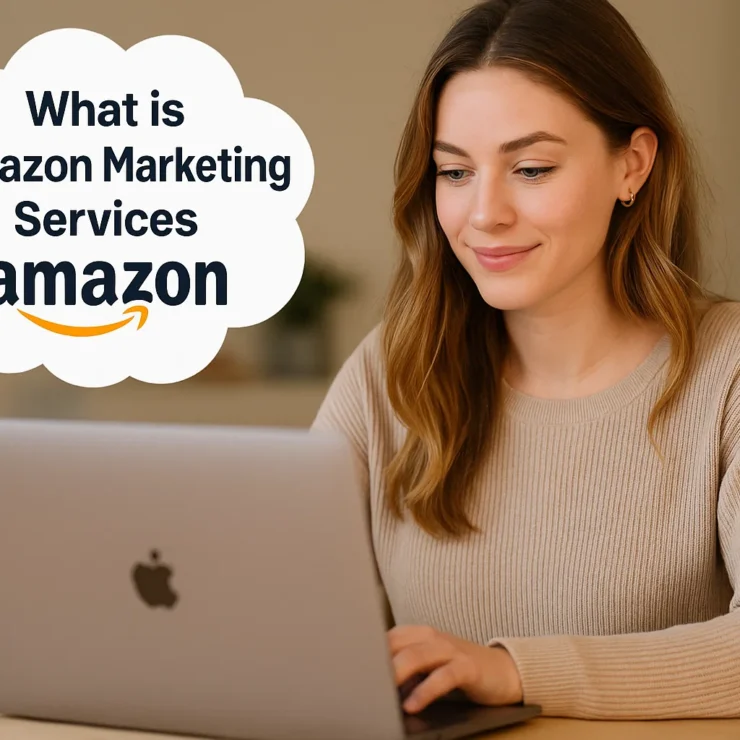With millions of daily buyers and a global reach, Amazon is one of the most lucrative platforms for entrepreneurs in 2025. But many aspiring sellers hesitate to get started because of one big concern — inventory. The good news? You don’t need to own a warehouse or buy bulk stock to make money on Amazon.
Thanks to modern eCommerce models, it’s now possible to run a profitable Amazon business without ever touching a single product. From dropshipping and print-on-demand to digital products and affiliate marketing, there are various ways to generate income on Amazon with zero inventory.
This comprehensive guide explores how to sell on Amazon without inventory, the best business models to consider, and step-by-step instructions to get started — even if you’re on a tight budget.
Is It Really Possible to Sell on Amazon Without Inventory?
Absolutely — and it’s more common than ever.
Selling on Amazon without inventory means you don’t have to pre-purchase or store physical products yourself. Instead, you leverage fulfillment solutions or digital strategies that allow you to list and sell products without keeping stock on hand.
Several legitimate business models — like dropshipping, third-party fulfillment, print-on-demand, and even affiliate marketing — make this possible. These methods remove the traditional barriers to entry, making Amazon accessible to anyone with a laptop and internet connection.
Even Amazon supports these methods through programs like Merch by Amazon, KDP (Kindle Direct Publishing), and Amazon Associates. Whether you want to sell physical goods without storing them or focus on digital or informational content, the no-inventory route offers a flexible and scalable entry into eCommerce.
Ready to scale your no-inventory Amazon business? Learn how to create an Amazon Storefront in 2025 and boost your earnings.
Top Ways to Sell on Amazon Without Holding Inventory
Want to earn on Amazon without managing stock? These top methods let you sell and profit without ever storing products yourself. Perfect for beginners, side hustlers, and digital entrepreneurs looking for low-risk, scalable income streams. Explore each option below to find what fits you best.
Dropshipping on Amazon (2025)
If you’re a professional asking how to sell on Amazon without inventory, dropshipping may be the simplest and most budget-friendly route. It’s a globally popular business model where a third-party supplier handles everything — from storing the product to shipping it directly to your customer.
What is Amazon Dropshipping?
Amazon dropshipping is when you list a product on Amazon, and once it sells, you buy it from a supplier (like CJDropshipping, AliExpress, or Spocket) who then ships it straight to the customer. You never handle the product — your focus is on marketing, customer service, and ensuring a smooth shopping experience.
You’re essentially acting as the storefront, while your supplier is the warehouse and delivery system behind the scenes.
Is Dropshipping Allowed on Amazon?
Yes, Amazon allows dropshipping, but only if you follow their rules carefully. Here’s what’s required:
You must be the seller of record.
All invoices, packing slips, and packaging must show your brand, not the supplier’s.
Avoid dropshipping from retailers like Walmart or eBay. That’s against Amazon’s terms and could get your account suspended.
A smart dropshipper works only with reputable suppliers who understand Amazon’s dropshipping policies — and who offer fast shipping (ideally within 5-7 days). In 2025, customers expect quick delivery, so slow fulfillment can hurt your seller ratings.
Pros and Cons of Dropshipping
Pros
- No upfront inventory investment
- No warehousing or shipping worries
- Easy to test and scale new products
- Global selling opportunities
Cons
- Lower profit margins
- Less control over quality and delivery
- High competition
- Risky if supplier makes mistakes
Dropshipping is a flexible way to make money on Amazon without inventory, especially for busy professionals looking to build passive income streams. But success depends on reliable suppliers, strong customer service, and sticking closely to Amazon’s rules.
If you want a low-risk entry into eCommerce and are willing to put in the effort upfront, dropshipping might be your ideal path to becoming an Amazon seller without inventory.
Amazon FBA
Another powerful strategy for professionals exploring how to sell on Amazon without inventory is utilizing Amazon FBA (Fulfillment by Amazon). This model lets you tap into Amazon’s vast logistics network without ever storing products in your own home or office.
What Is Amazon FBA?
With Amazon FBA, sellers send inventory to Amazon’s fulfillment centers, and Amazon handles the storage, packaging, shipping, and even customer service. It’s a hands-off model that makes selling on Amazon more accessible, even if you don’t want to manage inventory directly.
But here’s where it gets interesting for inventory-free sellers: You can source products from a manufacturer or supplier, and have them shipped straight to Amazon’s warehouse — meaning you never physically touch the product.
How to Sell Without Holding Inventory Using FBA
To legally and effectively sell without managing stock yourself, there are a few key compliance requirements:
Inventory Ownership
Even if a supplier ships the goods directly to Amazon’s warehouse, you must be listed as the product owner. That means the items are technically “yours” on paper — not drop-shipped from a third-party retailer.Labeling and Packaging
Your supplier must label all items with Amazon’s FNSKU barcodes and package them according to strict Amazon FBA standards. Coordinate closely with your manufacturer to avoid compliance issues.Fulfillment Readiness
Items shipped to Amazon must meet specific guidelines — like size, weight, and packaging protection. If they arrive non-compliant, Amazon may reject them or charge extra prep fees.
Pros and Cons of Amazon FBA
Pros:
Access to Amazon’s global fulfillment network
Prime eligibility = higher visibility & conversions
Amazon handles customer service & returns
Scalable and efficient for busy professionals
Cons:
FBA storage and fulfillment fees
Long-term storage penalties for unsold inventory
Requires capital upfront for bulk purchasing
Less control over shipping times and packaging
Real-World Example: Fashion Seller Using FBA
Product: Summer Dresses
Wholesale Cost per Unit: $20
Selling Price: $50
FBA Fees (Storage, Shipping, Handling): $5
Amazon Referral Fee (15%): $7.50
Miscellaneous Costs: $1
Profit Per Sale: $16.50
You simply find a trusted supplier, bulk order trending styles, and ship the items to Amazon’s fulfillment center. From there, Amazon takes care of everything. You focus on listing optimization, marketing, and scaling — without ever packing a single box.
Curious about another smart selling method? Discover how Amazon Retail Arbitrage works in 2025—buy low, sell high, no inventory needed.
Sell Digital Products on Amazon
If you’re looking for a truly hands-off way to sell on Amazon without ever touching a physical product, digital items might be your perfect entry point. With zero inventory to store and no shipping logistics to manage, digital products offer one of the easiest and most scalable paths to passive income on Amazon.
What Are Digital Products?
Digital products are intangible goods sold and delivered electronically. These include:
E-books
Audiobooks
Software or mobile apps
Online courses or tutorials
Music and sound effects
Digital art and illustrations
Printables, templates, planners, or worksheets
Selling these types of products on Amazon allows you to make money without inventory, packaging, or shipping costs — and in many cases, you can create the content once and sell it over and over again.
How to Sell Digital Products on Amazon Without Inventory
Here’s how professionals are leveraging digital goods to generate revenue:
Register as an Amazon Seller
You’ll need to create a seller account to access Amazon’s publishing and digital product platforms.Choose the Right Platform
Kindle Direct Publishing (KDP) for e-books
Audible/ACX for audiobooks
Merch by Amazon for digital artwork on physical merchandise
Amazon Ignite for educational printables
Amazon Music for digital audio
Appstore Developer Console for software and apps
Create (or Outsource) Your Product
Develop your product based on your skills or niche. Not a writer? No problem — hire ghostwriters or use public domain content.Upload & Publish
Format your digital product to Amazon’s specifications. Add keyword-rich descriptions, compelling titles, and attractive visuals.Set Pricing & Royalties
Depending on the platform, you can earn between 35%–70% in royalties, often with no per-unit cost after the initial creation.
Pros and Cons of Selling Digital Products on Amazon
| Pros | Cons |
|---|---|
| High profit margins: Low to zero cost of goods. | Piracy risk: Digital items are easy to copy and distribute illegally. |
| No shipping or storage: Fully digital delivery. | High competition: Popular niches are often saturated. |
| Scalable: Sell one file thousands of times. | Refund policy: Amazon may grant refunds easily, even on digital items. |
| Passive income potential: Set it up once and sell repeatedly. | Platform restrictions: You must follow strict formatting/content guidelines. |
Case Study: Selling a Digital Product (E-book)
Product: E-book on “How to Start a Side Hustle in 30 Days”
Creation method: Outsourced via a freelance ghostwriter for $100
Publishing platform: Kindle Direct Publishing (KDP)
Steps:
Design a compelling cover using Canva or Fiverr.
Format the e-book for Kindle using Amazon’s free tools.
Upload and set the price at $6.99.
Choose the 70% royalty option (available for books priced $2.99–$9.99).
Earnings Breakdown:
Selling Price: $6.99
Royalty Rate: 70%
Amazon Cut: $2.10
Profit Per Sale: $4.89
Break-even point: 21 sales (to recoup $100 ghostwriting cost)
After that, every sale becomes nearly 100% profit.
Pro Tip: You Don’t Have to Create the Content Yourself
Many Amazon sellers scale by outsourcing:
Hire a writer for your e-book
Use royalty-free or public domain music for audio products
Collaborate with graphic designers for digital art
Use AI tools to assist in course creation or workbook design
This lets you focus on marketing and scaling — not content production.
New to selling? Learn how Amazon FBA Private Label helps beginners launch products without inventory or shipping headaches.
Sell via Merch by Amazon (Print-on-Demand)
Another practical and increasingly popular method to sell on Amazon without inventory is through Merch by Amazon, also known as Amazon Merch on Demand—a built-in print-on-demand (POD) platform. This model allows you to upload custom graphic designs that Amazon prints on various products like t-shirts, hoodies, tote bags, and phone cases. Products are only created when an order is placed, meaning you don’t have to handle inventory, manufacturing, shipping, or even customer service.
Here’s how the Merch by Amazon process works:
Apply for a Merch by Amazon account: Go to merch.amazon.com and request an invitation. Approval can take a few days to several weeks.
Create your custom designs: Use graphic design tools like Canva, Adobe Illustrator, or Photoshop, or outsource design creation via platforms like Fiverr or Upwork.
Upload your design files: Submit your artwork and choose the product types and colors you want your design to appear on.
Set product details: Fill in the title, product description, and keywords, then select your pricing based on royalty rates and market competitiveness.
Earn royalties: When a customer places an order, Amazon prints, ships, and handles support. You earn a royalty based on the sale price minus Amazon’s base cost.
This print-on-demand model is excellent for artists, entrepreneurs, or anyone who wants to monetize designs without the complexities of inventory management or logistics.
Pros and Cons of Merch by Amazon / Print-on-Demand
| Pros | Cons |
|---|---|
| No upfront inventory costs: You only upload designs; Amazon handles production and fulfillment. | Limited design slots: New sellers start with low tier limits and must sell products to unlock higher tiers. |
| Passive income opportunity: Once a design is uploaded, it can generate income repeatedly. | Approval required: Sellers must request an invitation, and approval isn’t guaranteed. |
| Access to Prime customers: Your products are eligible for fast shipping through Amazon Prime. | Competitive space: POD is a saturated space, especially for t-shirts, requiring strong design and niche focus. |
| No shipping or customer service headaches: Amazon handles everything. | Limited control: You can’t customize packaging, branding, or customer experience like on your own store. |
Case Study
Product: Retro Gaming T-Shirt Series
Create a series of nostalgic designs featuring retro gaming controllers and pixel art with fun quotes like “Level Up Life”. Use a transparent PNG file at 300 DPI and size it according to Merch by Amazon’s template specifications.
Once your designs are ready:
Apply and get approved for Merch by Amazon.
Upload the files and create a compelling title and description that emphasizes appeal to 80s/90s gamers.
Choose multiple color options for your shirts and set the price at $21.99, considering competition and royalties.
Estimated breakdown per sale:
Selling price: $21.99
Amazon printing & fulfillment fee: ~$7.50
Referral fee (15%): ~$3.30
Design cost per unit (averaged): ~$1.00
Your royalty/profit per sale: ~$10.19
You can create and upload dozens of themed designs, from gaming and fitness to pets and holidays. Each one has the potential to earn passive income indefinitely—with no inventory involved.
Amazon Associates Program (Affiliate Marketing)
One of the easiest and most beginner-friendly ways to sell on Amazon without touching inventory is through the Amazon Associates Program, Amazon’s official affiliate marketing platform. With this model, you earn a commission by promoting Amazon products on your blog, website, YouTube channel, or social media.
You don’t need to create or ship products—instead, your job is to influence buying decisions by sharing your personal recommendations, tutorials, comparisons, or reviews. When someone clicks your affiliate link and makes a purchase, Amazon pays you a percentage of the sale.
How It Works:
Sign up for the Amazon Associates Program at affiliate-program.amazon.com. It’s free and easy to get started.
Choose products to promote based on your niche or audience interests. Whether it’s home décor, tech gadgets, baby products, or fitness gear—Amazon has something for every audience.
Create content where you naturally embed your unique affiliate links. This could be a blog post, a YouTube video, a Pinterest pin, or a TikTok review.
Earn commissions whenever someone clicks your link and completes a purchase on Amazon (even if they buy other products too within 24 hours!).
Pros of Amazon Associates:
No inventory, shipping, or customer service required—Amazon handles all of that.
Huge product selection—you can promote millions of items.
Trusted brand—Amazon’s strong reputation helps boost conversions.
Passive income potential—your content can earn you money 24/7.
Low startup cost—perfect for content creators or beginners.
Cons of Amazon Associates:
Low commission rates—ranging from 1% to 10% depending on the category.
24-hour cookie window—you only earn if purchases are made within a day of clicking your link.
Account termination risk if you violate Amazon’s strict affiliate guidelines.
Requires traffic—your success depends on how many people see and engage with your content.
Case Study
Niche: Home Gym Equipment
Platform: YouTube Channel + Blog
Meet Jamie, a fitness enthusiast who runs a YouTube channel focused on home workouts and reviews of fitness gear. Jamie signs up for the Amazon Associates Program and creates a video titled “Top 5 Adjustable Dumbbells for Small Spaces”, featuring honest reviews and demonstrations.
Each product mentioned in the video is linked in the description with Jamie’s Amazon affiliate links. Jamie also writes a companion blog post with pros, cons, and buying tips for each dumbbell set.
Over the next month, the video gains 10,000 views. Of those, 1,000 viewers click the links, and 80 people purchase dumbbells worth an average of $150.
Earnings Breakdown:
Average Product Price: $150
Commission Rate (Sports/Fitness Category): 4%
Total Sales: 80 x $150 = $12,000
Affiliate Commission: $12,000 x 4% = $480 profit
Jamie didn’t store any products, didn’t fulfill a single order, and yet still earned hundreds just by sharing helpful content.
Master your profits! Discover the smartest Amazon pricing strategies for 2025 and learn how to price like a pro.
Amazon Kindle Direct Publishing (KDP)
Another powerful way to sell on Amazon without holding inventory is through Amazon Kindle Direct Publishing (KDP). This platform allows authors, creators, and entrepreneurs to publish and sell their own digital books, paperbacks, and even hardcover books—without upfront printing costs or inventory management.
With KDP, you upload your manuscript, cover design, and metadata, and Amazon takes care of printing and shipping only when customers order your book. This is a perfect model for writers, experts, or anyone with valuable content to share.
How It Works:
Create your book content — write your eBook or paperback manuscript using your favorite writing software.
Design your book cover — you can create one yourself using free tools like Canva or hire a designer on Fiverr.
Set up your KDP account at kdp.amazon.com and upload your manuscript and cover files.
Choose your pricing and royalties — you decide the selling price and royalty rate (up to 70% for Kindle eBooks).
Publish and promote your book — once live, Amazon prints or delivers the book digitally when customers purchase.
Earn royalties on each sale without ever touching physical inventory.
Pros of Amazon KDP:
No upfront printing or inventory costs—print-on-demand means Amazon only produces a book when it’s ordered.
Global reach—your book is available on all Amazon marketplaces worldwide.
High royalty potential—earn up to 70% royalties on Kindle eBooks.
Multiple formats—publish eBooks, paperbacks, and hardcovers.
Easy to update content—make edits and new editions quickly anytime.
Control over pricing and marketing—run promotions, enroll in Kindle Unlimited, and more.
Cons of Amazon KDP:
Highly competitive marketplace—thousands of books are published daily, so marketing is crucial.
Time investment to create quality content and cover design.
Royalties vary by region and price—some restrictions apply.
No guaranteed sales—success depends heavily on promotion and audience reach.
Case Study
Book Title: “The Beginner’s Guide to Urban Gardening”
Author: Sarah, a passionate gardener and blogger
Sarah writes a detailed, easy-to-follow guide on how to grow vegetables and herbs in small city spaces. She formats it into a Kindle eBook and also publishes a paperback version via KDP.
Sarah creates an attractive book cover using Canva and uploads everything to KDP. She prices the Kindle eBook at $9.99 and the paperback at $15.99.
She promotes the book through her gardening blog, social media, and an email newsletter to her audience of 5,000 subscribers.
Earnings Breakdown:
eBook Price: $9.99
Royalty Rate: 70%
Net Earnings per eBook Sale: $6.99
Paperback Price: $15.99
Royalty Rate: ~60% after printing costs
Net Earnings per Paperback Sale: Around $4.50
If Sarah sells 100 eBooks and 50 paperbacks in a month, that’s roughly:
(100 x $6.99) + (50 x $4.50) = $699 + $225 = $924 in royalties — all without inventory or upfront printing costs.
Important Considerations When Selling on Amazon Without Inventory
Selling on Amazon without holding inventory is a popular way to start an online business with low upfront costs. However, it comes with some key considerations to keep in mind.
First, quality control is crucial since you don’t handle products directly. Choosing reliable suppliers or print-on-demand providers helps ensure customers receive good-quality items on time. Shipping delays or poor products can hurt your reputation.
Next, profit margins can be tighter because you often pay higher per-unit costs and Amazon fees. Pricing your products carefully to cover all costs while remaining competitive is essential.
Marketing plays a big role too. Since you’re not managing inventory, driving traffic to your listings or affiliate links through SEO, social media, or paid ads is vital for sales.
Compliance with Amazon’s policies and tax laws is another important factor. Make sure you understand the rules around dropshipping, print-on-demand, or affiliate marketing to avoid account issues.
Finally, even if you don’t ship products, you’re responsible for customer service and handling returns. Good communication and support build customer trust and loyalty.
By focusing on these areas, you can successfully run a scalable, inventory-free Amazon business while minimizing risks and maximizing profits.
Benefits of No-Inventory Selling Methods on Amazon
Selling products on Amazon without holding physical inventory has become an increasingly popular business model. Whether through dropshipping, print-on-demand, affiliate marketing, or Kindle Direct Publishing, these no-inventory methods offer many advantages for new and experienced sellers alike.
Low Startup Costs
One of the biggest benefits of no-inventory selling is the minimal upfront investment. Since you don’t need to purchase or store products, your initial expenses are much lower compared to traditional retail. This makes it easier for entrepreneurs to start their Amazon business with limited capital.
Reduced Risk and Overhead
Without inventory, you avoid risks related to unsold stock, storage fees, and product depreciation. You only pay for products or services when a customer places an order, which means less financial pressure and improved cash flow management.
Scalability and Flexibility
No-inventory models provide sellers the flexibility to expand their product range quickly. You can easily add new items like print-on-demand designs, affiliate links, or digital books without worrying about inventory management. This scalability allows sellers to adapt to market trends and customer demands efficiently.
Time-Saving and Simplified Operations
Managing inventory, packing, and shipping can be time-consuming. No-inventory methods let you focus on marketing, customer service, and content creation instead. For example, with Amazon Associates or Kindle Direct Publishing, Amazon handles order fulfillment and delivery.
Access to a Global Marketplace
By leveraging Amazon’s massive customer base and fulfillment network, sellers can reach buyers worldwide without the complexities of international shipping or inventory logistics.
Conclusion
No-inventory selling methods on Amazon offer a powerful way to start and grow an online business with lower risks, reduced costs, and greater flexibility. Whether you choose dropshipping, print-on-demand, affiliate marketing, or Kindle Direct Publishing, these models enable you to focus on your strengths—like marketing and creativity—while Amazon handles logistics. For anyone looking to enter the e-commerce space without the burden of inventory management, these strategies provide an accessible and scalable path to success.
FAQ's
Which Method Is Easiest for Beginners?
For beginners, the Amazon Associates Program (affiliate marketing) and Amazon Kindle Direct Publishing are often the easiest to start with. They require minimal upfront investment, no inventory management, and focus mainly on content creation and promotion. Print-on-demand is also beginner-friendly but may require some design skills. Dropshipping can be a bit more complex due to supplier management and customer service.
Where Can I Buy Products to Sell on Amazon?
If you choose dropshipping, you can source products from suppliers like AliExpress, Oberlo, or local wholesalers who offer dropshipping services. For print-on-demand, you don’t need to buy products upfront since the items are created on order. If you’re selling physical products yourself, consider wholesale suppliers, manufacturers, or liquidation sales to stock your inventory.
How Do I Handle Returns and Refunds When I Don't Have Physical Inventory?
When selling without inventory, handling returns and refunds depends on the fulfillment method. For dropshipping and print-on-demand, your supplier usually manages returns and refunds, but you must maintain good communication to ensure customer satisfaction. In affiliate marketing, you don’t handle returns directly since Amazon manages the entire transaction. Kindle Direct Publishing allows customers to request refunds through Amazon, which handles the process. Always clarify return policies in your listings and provide excellent customer support.
Contact Us for Tailored Solutions – Stores Automation
Ready to transform your Amazon store and achieve big wins. Sign Up at Stores Automation for personalized solutions that leverage the power of automation for your business. Reach out to us at 302-204-8244 or via email at info@storesautomation.com. For more information, visit our Contact Us page. Embark on the path to e-commerce success with Stores Automation – where small changes lead to big wins!
